Today we visited the Invalides and the Eiffel Tower in Paris, and now we are going to take a "Paris Speedboat" tour of the Seine.
In 1991, according to the criteria for the selection of cultural heritage (i) (ii) (iv), "Paris on the Seine" was approved by the UNESCO World Heritage Committee to be included in the "World Heritage List" as a cultural heritage. Evaluation of the World Heritage Committee: From the Louvre to the Eiffel Tower, from the Place de la Concorde to the Royal Palaces, the historical changes of Paris can be seen from the Seine. Notre Dame Cathedral and the Sainte-Chapelle are architectural masterpieces, while the wide squares and boulevards transformed by Ottoman in Paris influenced urban planning around the world in the late 19th and 20th centuries.
The Seine is one of the largest rivers in France. The length of the river in the urban area of Paris is about 20 kilometers, and the heritage part is about 13 kilometers. The Seine crosses the city of Paris, making this fashionable and romantic capital more romantic. 36 bridges span the Seine, and the cruise ships, bridges, and scenery on both sides of the Seine at night make people seem to be in a dream. The famous buildings and tourist attractions of Paris are located on both sides of the Seine.
There is a cruise ship terminal at the foot of the Eiffel Tower. We walked across the Jena Bridge and took the Vedettes de Paris at the Port de Suffren pier on the southwest side of the bridge. The fare is 15 euros, one hour round trip. Paris speedboats are small boats, not many people, more comfortable.

The weather became overcast, and there were raindrops. The boat slowly left the pier, with the Pont d'Iéna in front of it.

In 1807, Napoleon I issued an imperial decree to build the bridge, which takes its name from the victorious Battle of Jena in 1806. The bridge is designed with 5 arches, each 28 meters long, and took 6 years to build. There is an eagle pattern on each of the five piers. Four statues of soldiers leading horses are erected on the four bridge heads, namely Gallic knights, Roman knights, Arabian knights and Greek knights. In 1975, the bridge was included in the list of historical sites.
Across the Jena Bridge is the Paris Cruise Terminal. This is a cruise ship parked on the shore.
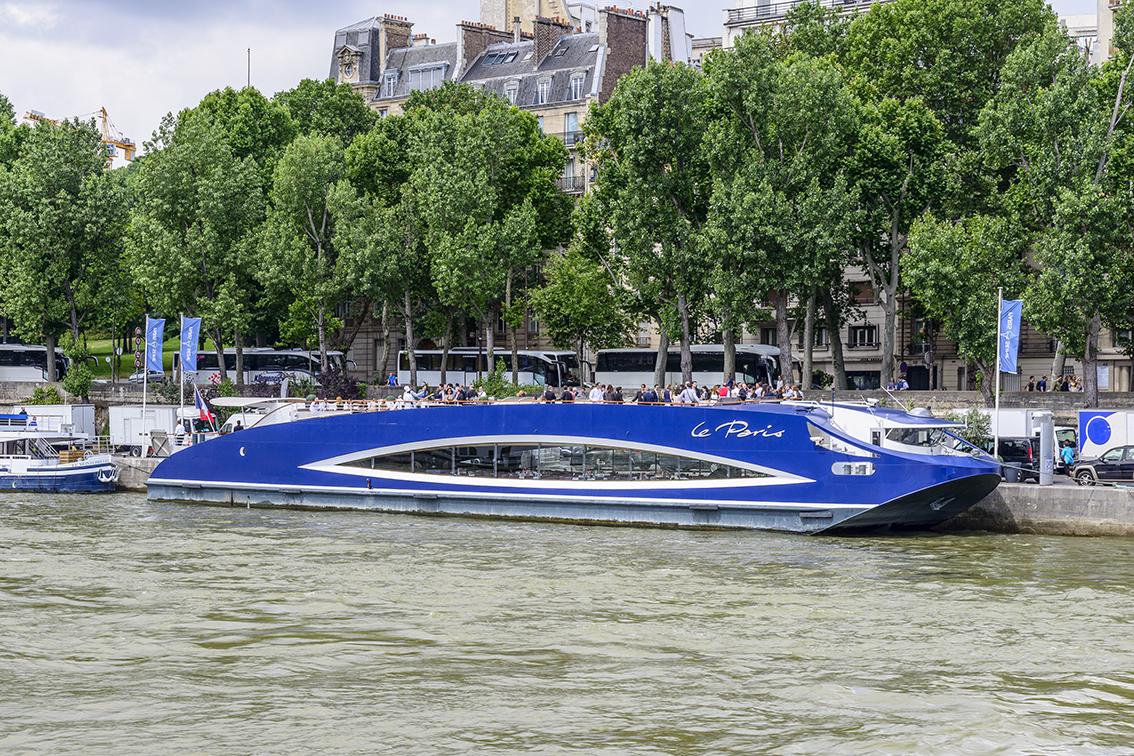
Stand in the stern and photograph the Eiffel Tower.
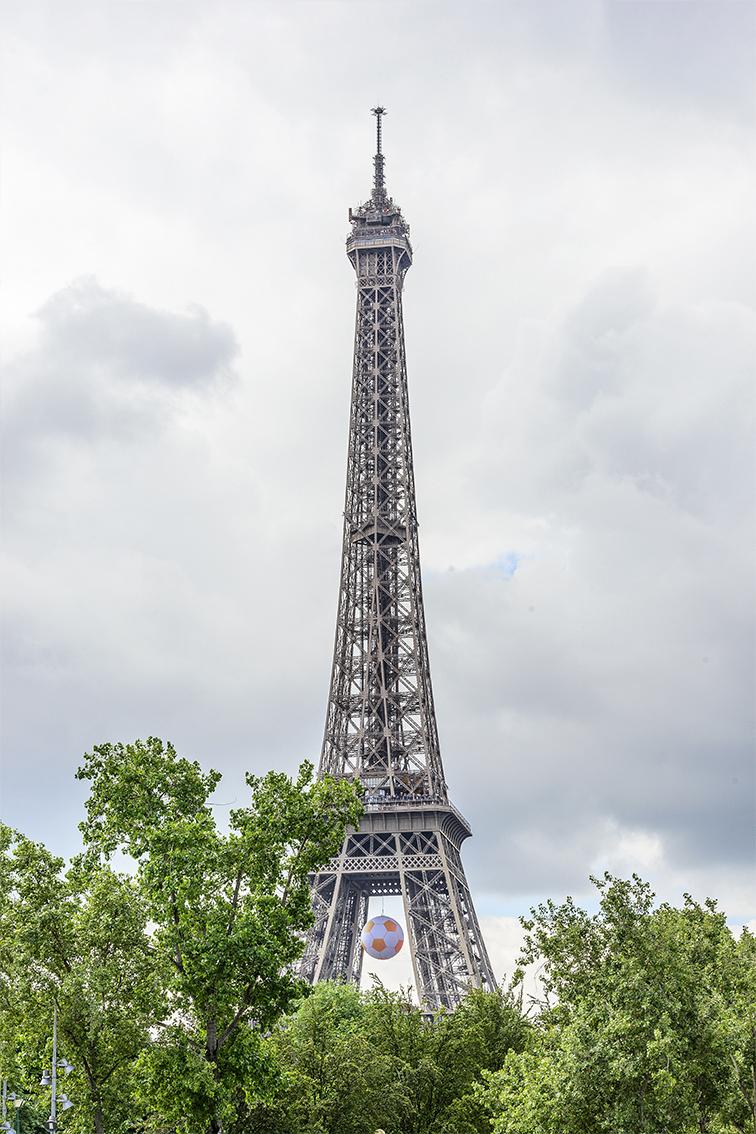
The cruise ship crosses the Pont de l'Alma.
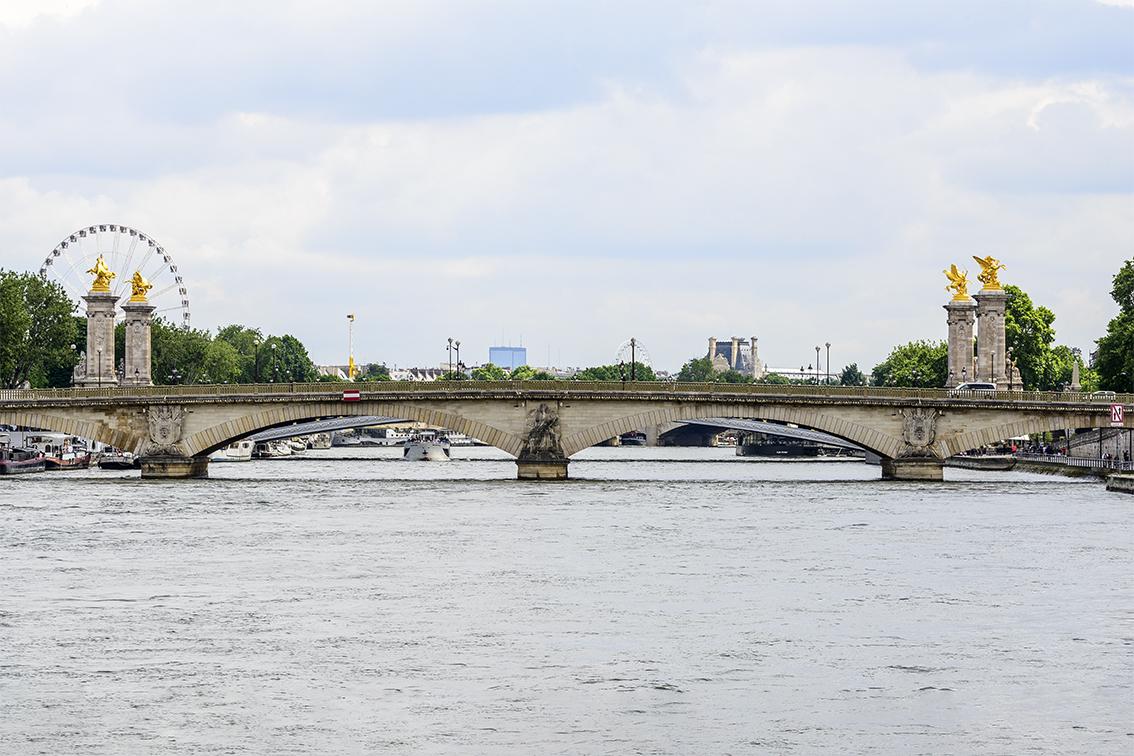
The Alma Bridge is 153 meters long and 42 meters wide. It is named after the Battle of Alma during the Crimean War (September 20, 1854), when the British and French forces defeated the Russian army. Princess Diana of England died in a car accident in a tunnel at the northern end of the Alma Bridge in 1997.
Through the bridge hole of the Pont d'Alma, you can see the Pont des Invalides. The Pont des Invalides is an arch bridge and the lowest bridge across the Seine in the Paris region. It is 152 meters long and 18 meters wide. It was opened to traffic in 1855. Behind the Pont des Invalides are the four towers of the Pont Alexandre III, and you can also see the Ferris wheel on the Place de la Concorde.
Cross the Invalides Bridge and in front of you is the Pont Alexandre III.
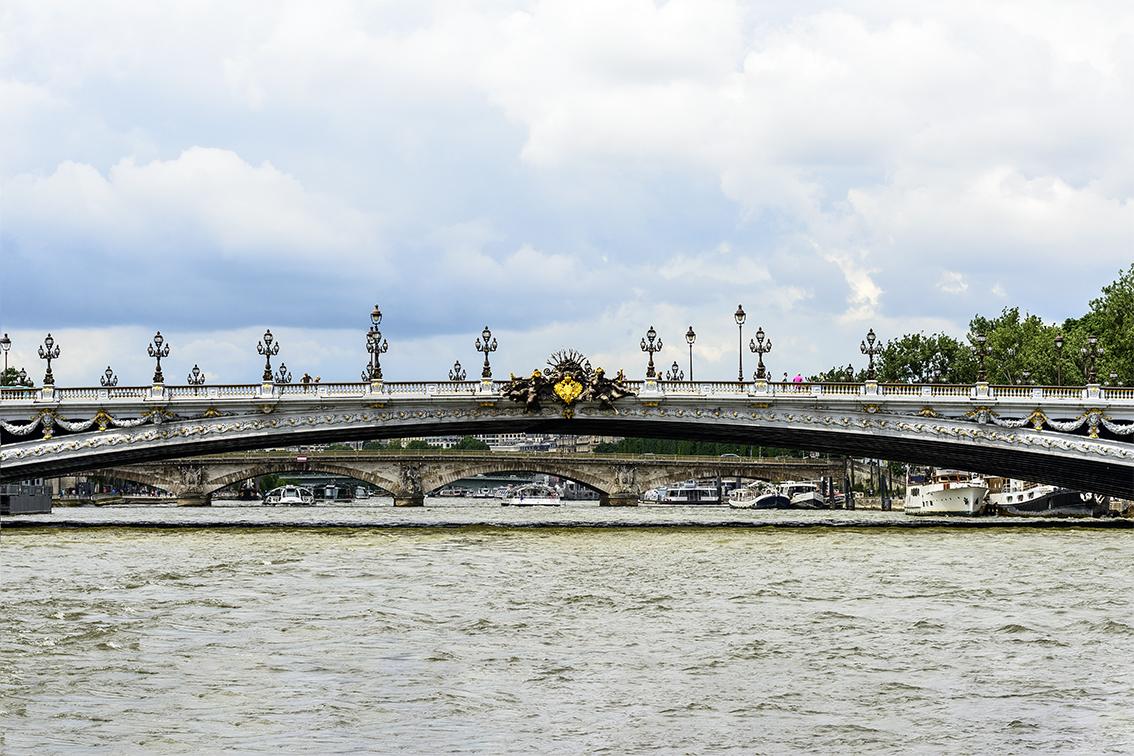
Arguably the most beautiful bridge I've ever seen.
The water fairy relief at the top of the central vault of the bridge.

This is the Seine Fairy representing France and is the work of French sculptor Georges Récipon (1860-1920).
The cruise ship crossed the Alexander III Bridge and quickly took a photo of the water fairy relief on the other side.
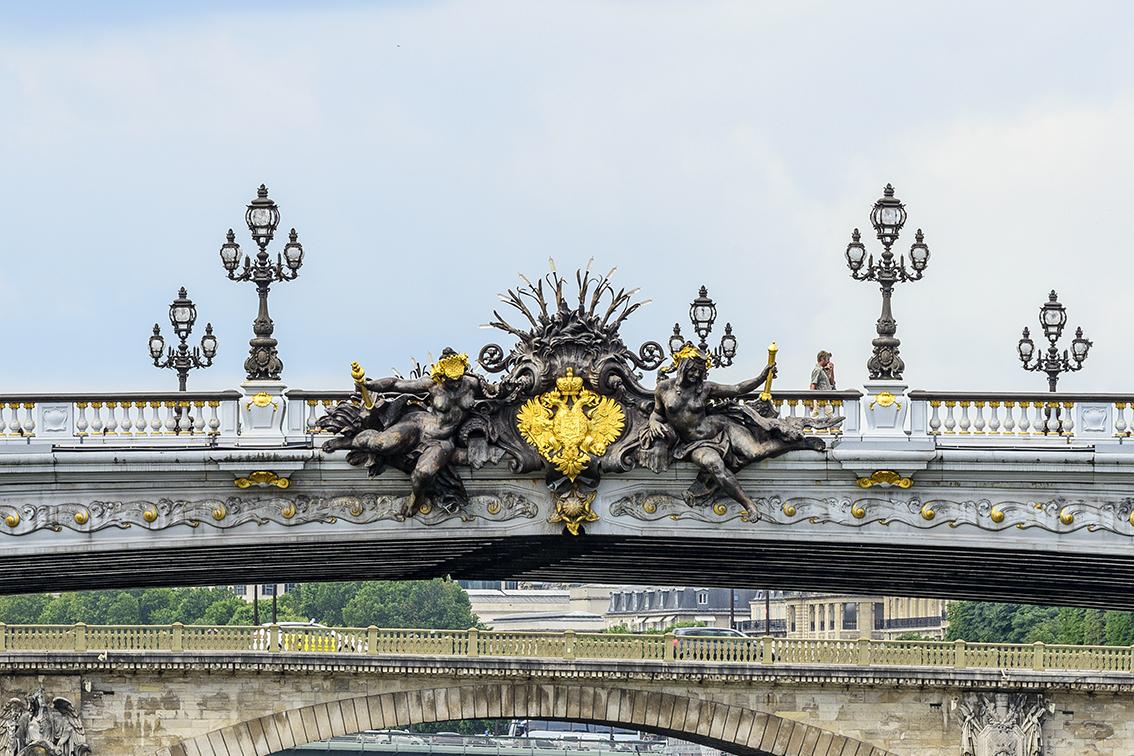
This is the Neva nymph representing Russia and the work of the French sculptor Georges Récipon (1860-1920). The Seine in Paris and the Neva in St. Petersburg represent the French-Russian alliance.
The tower on the north bank of the Alexander III Bridge.
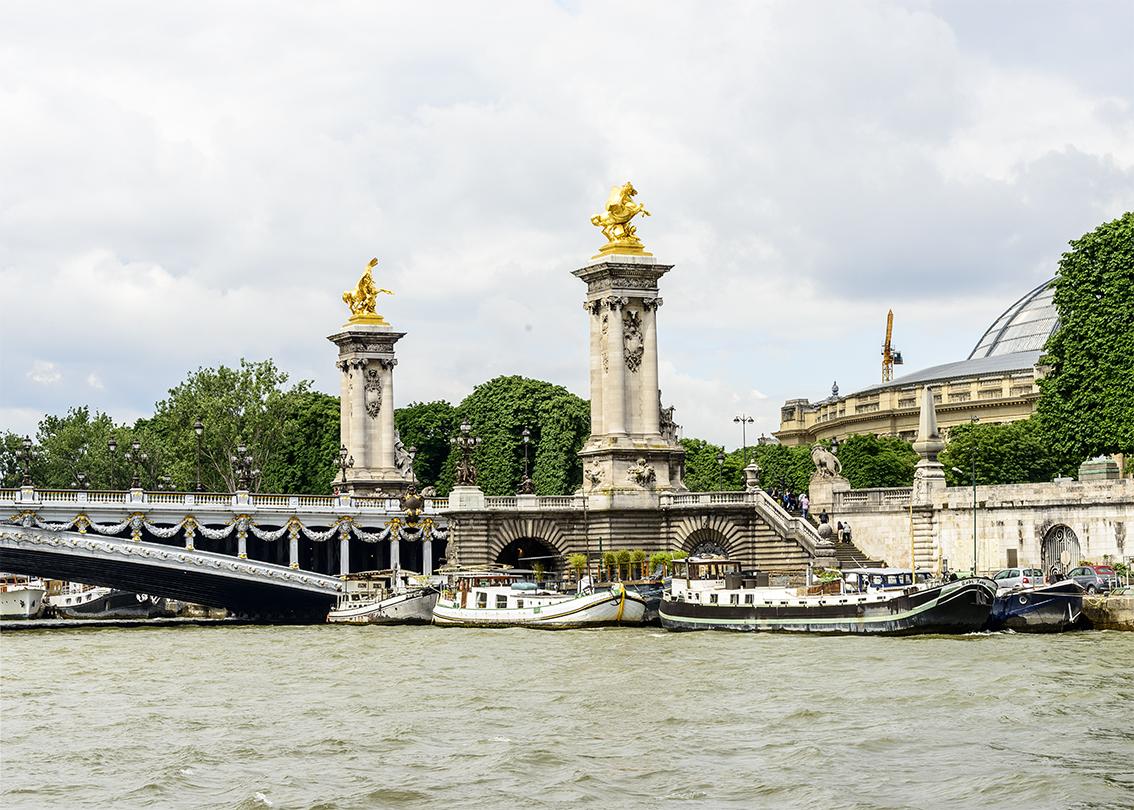
The tower on the south bank of the Alexander III Bridge.
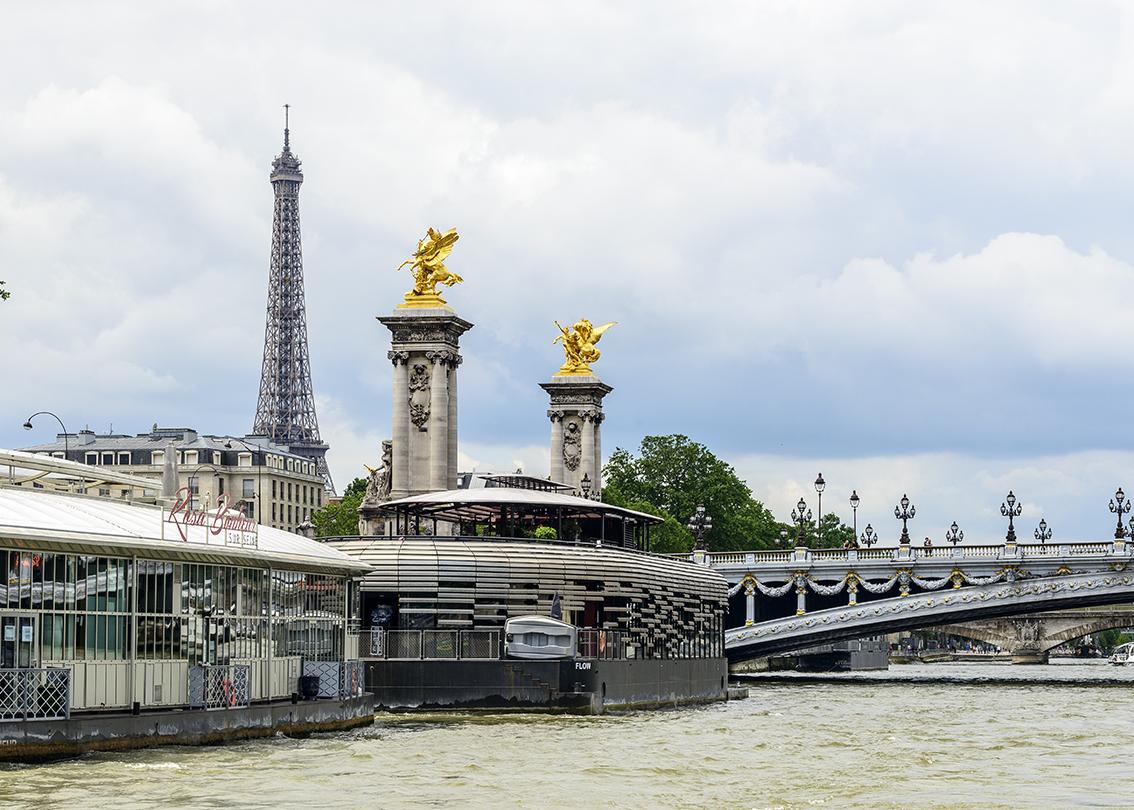
The Alexander III Bridge is gradually disappearing.
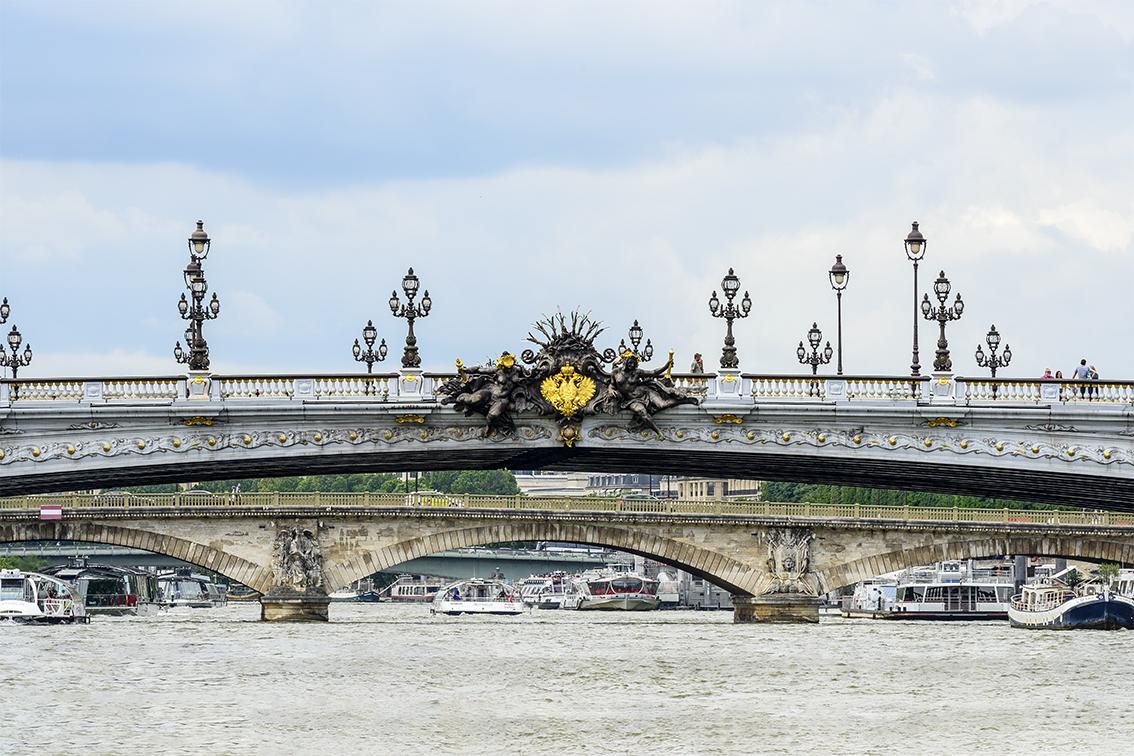
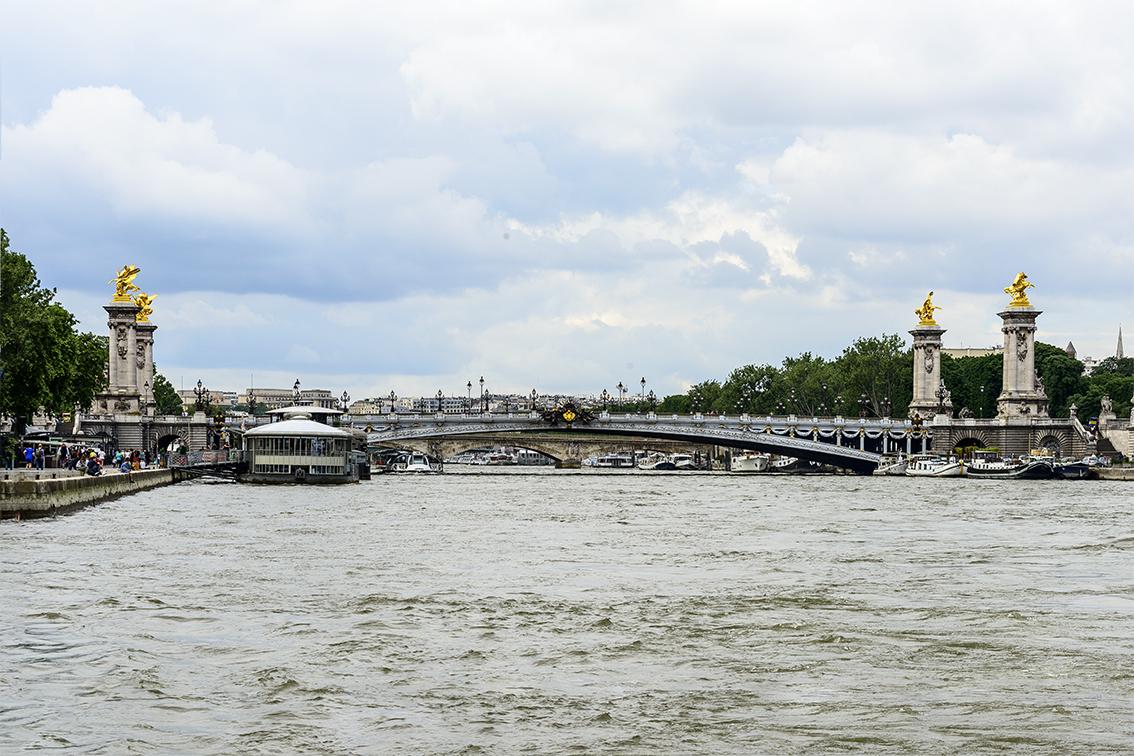
The cruise ship arrives at the Pont de la Concorde. This is the French Parliament Building (French: Assemblée nationale) on the south bank of the bridge.
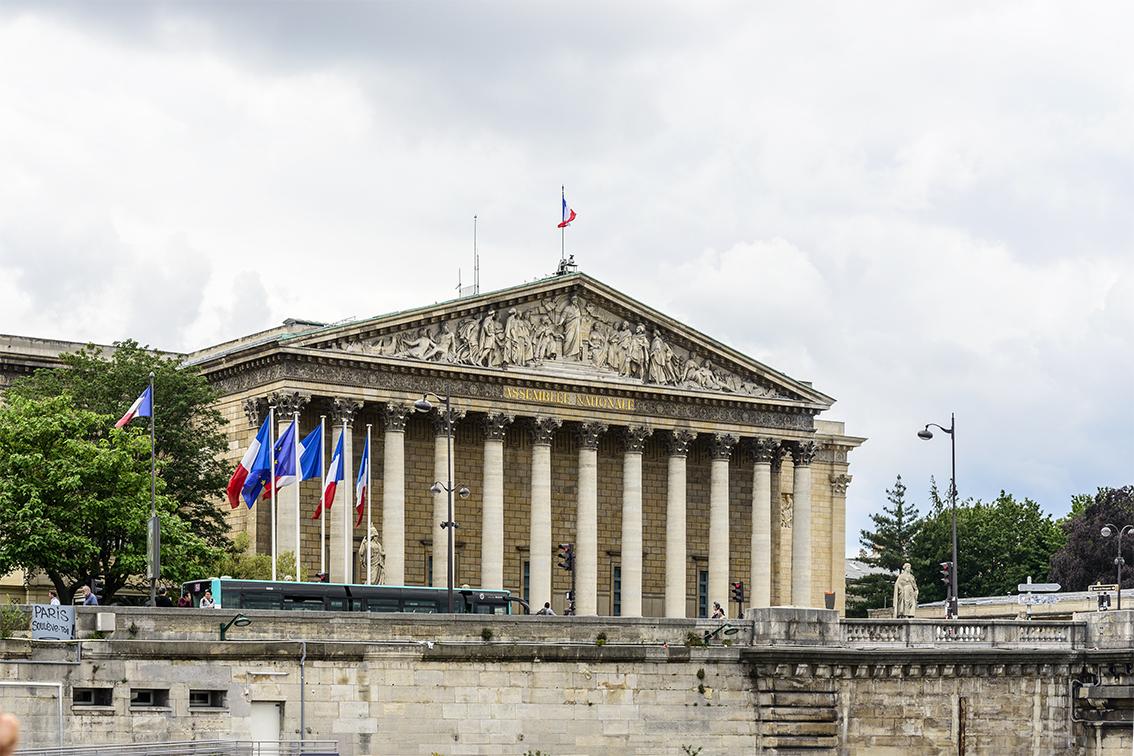
This is the lower house of the French parliament. This building is called the Bourbon Palace. The Bourbon Palace is a classical building with a history of more than 260 years. This semicircular building is majestic. The wide colonnade composed of 12 large round stone columns at the north gate supports a triangular horizontal lintel, which is decorated with whole body reliefs. There are 6 statues on either side of the 30 steps under the colonnade. It was built in 1722 for the Duchess of Bourbon, the daughter of Louis XIV, hence the name. After 1789, the Bourbon Palace has almost always been the seat of the highest legislative body in France. It is regarded as a symbol of French law.
Map from Jena Bridge to Concorde Bridge.
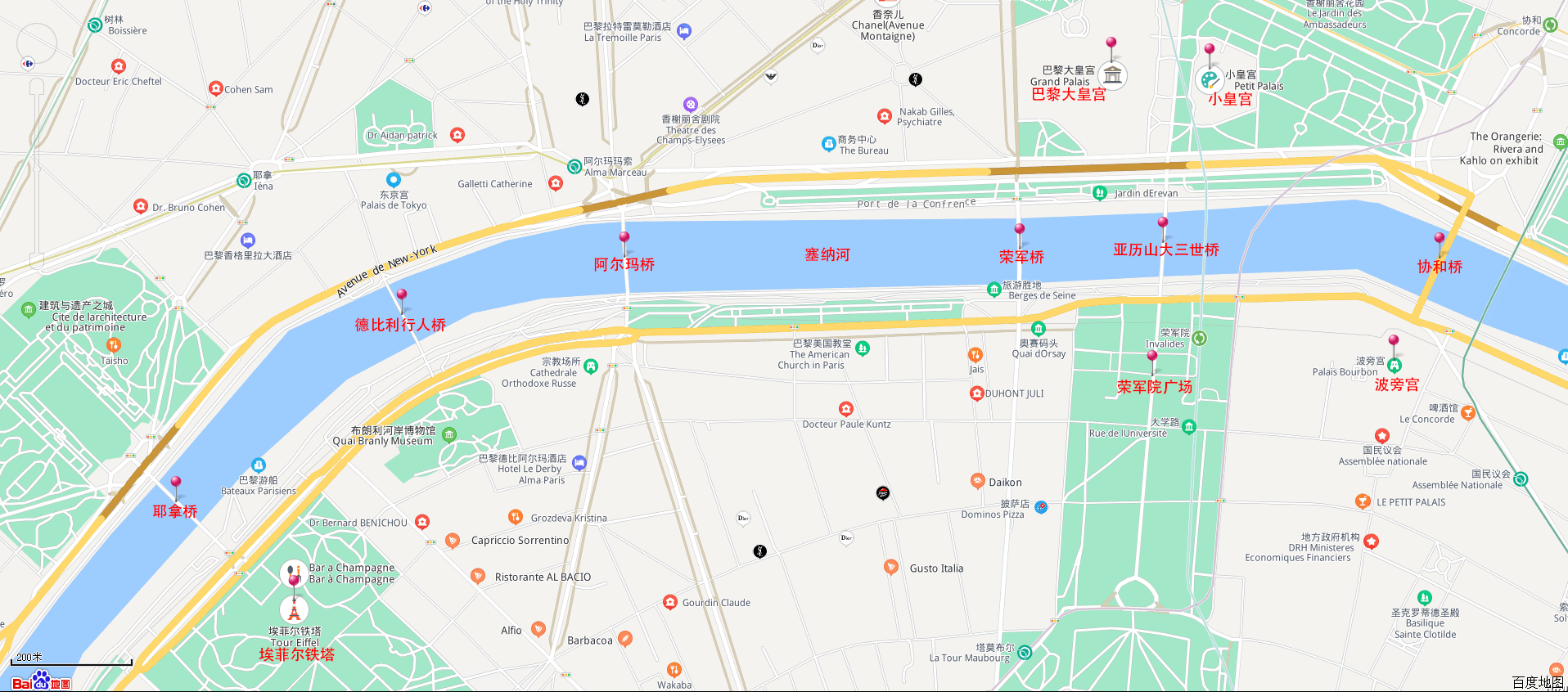
The cruise ship continued to sail. On the left side of the ship was the Tuileries Garden, and a palace-like building appeared on the right side of the ship.
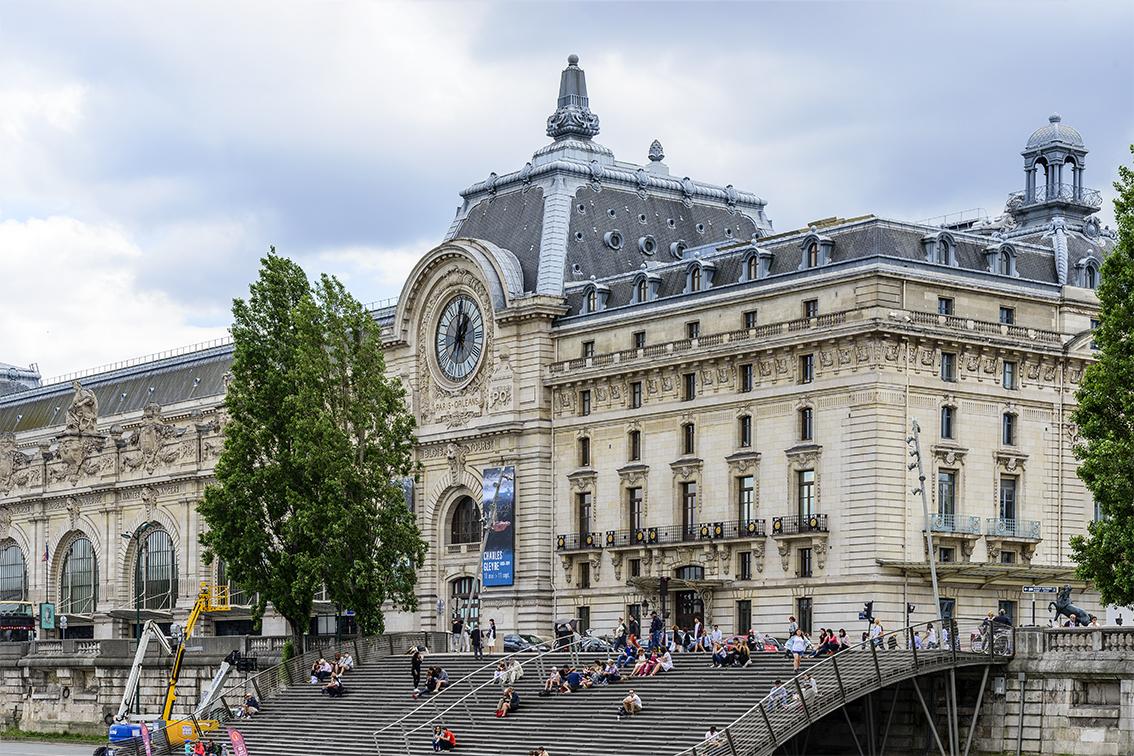
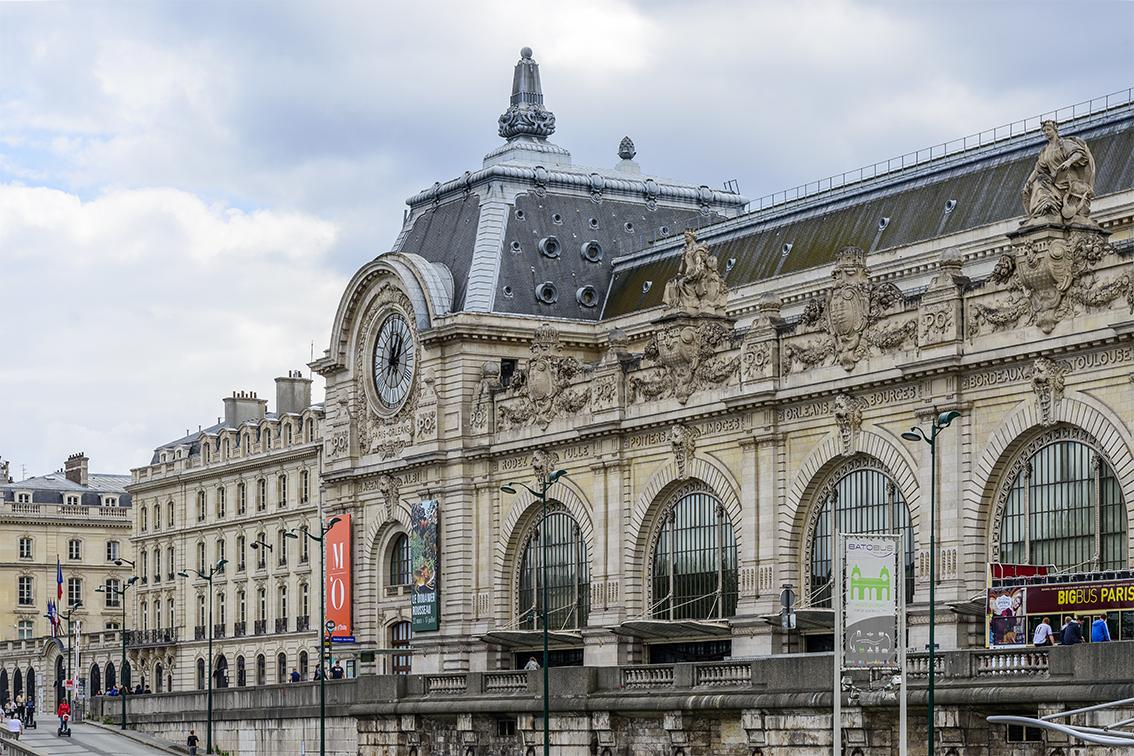
This is the Musée d'Orsay. The Musée d'Orsay was rebuilt from the Orsay railway station, which was abandoned for many years. It was completed and opened at the end of 1986. The rebuilt museum is 140 meters long, 40 meters wide and 32 meters high. The roof of the museum is a glass ceiling with an area of 35,000 square meters. The museum has a practical area of more than 57,000 square meters and has a total of 80 exhibition halls or showrooms. The exhibition area is 47,000 square meters, of which the long-term exhibition hall 16,000 square meters. The Musée d'Orsay, together with the Louvre and the Centre Pompidou, is known as the three major art museums in Paris. The museum mainly displays Western art works created between 1848 and 1914, which gathers the essence of modern French culture and art, fills the gap between ancient art and modern art in the history of French culture and art development, and makes the Musée d'Orsay a perfect intermediate transition connecting the Louvre, the palace of ancient art, and the Centre Pompidou, the palace of modern art.
The Orsay railway station was built for the 1900 World's Fair and was designed by architect Victor Laloux.
This is the Louvre across the river.
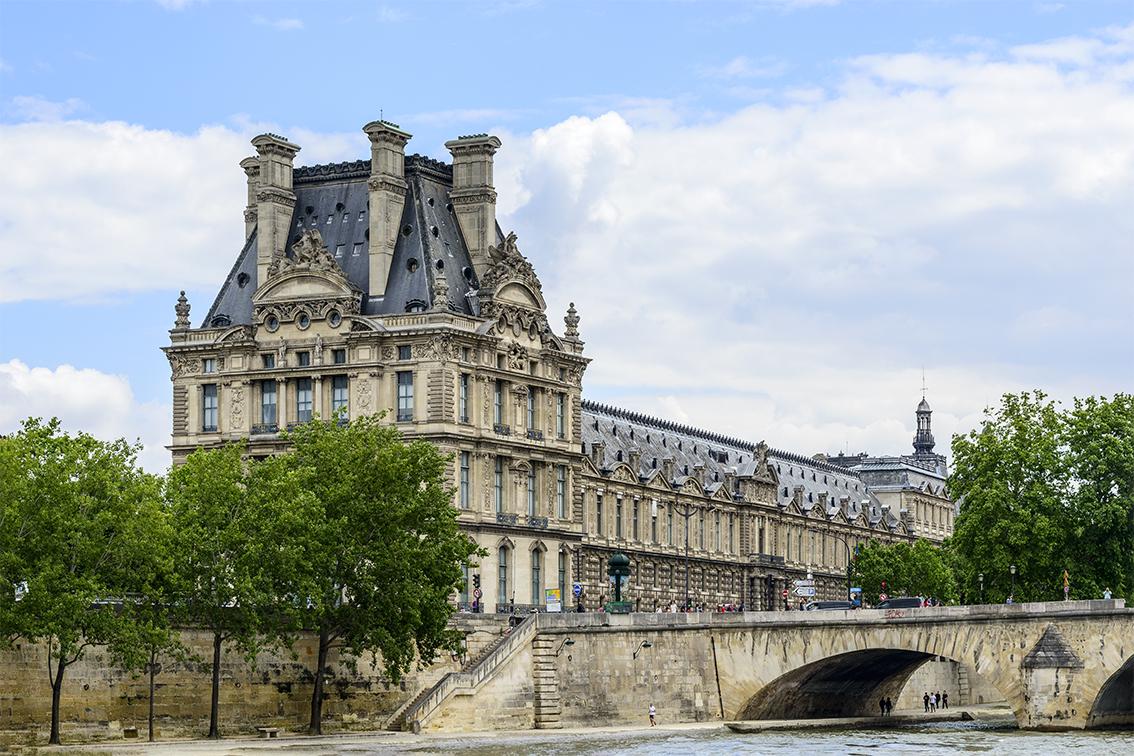
The Louvre and the Musée d'Orsay are connected by the Pont Royal. The Royal Bridge is also known as the King's Bridge. This is a solid stone bridge, built in 1685 and 1698 years, funded by Louis XIII. The construction of the Royal Bridge, hence the name.
Thank goodness! The weather got better and I saw blue sky and white clouds again.
Soon arrived the Pont du Carrousel. The bridge was inaugurated in 1831 as the Pont des Saint-Pères. Because of its proximity to the Arc de Triomphe (Little Arc de Triomphe) of Carrousel, King Louis-Philippe renamed it the Carrousel Bridge in 1834. Due to its proximity to the Louvre, the bridge is also known as the Louvre Bridge.
This is the Louvre at the head of the Carrousel Bridge.
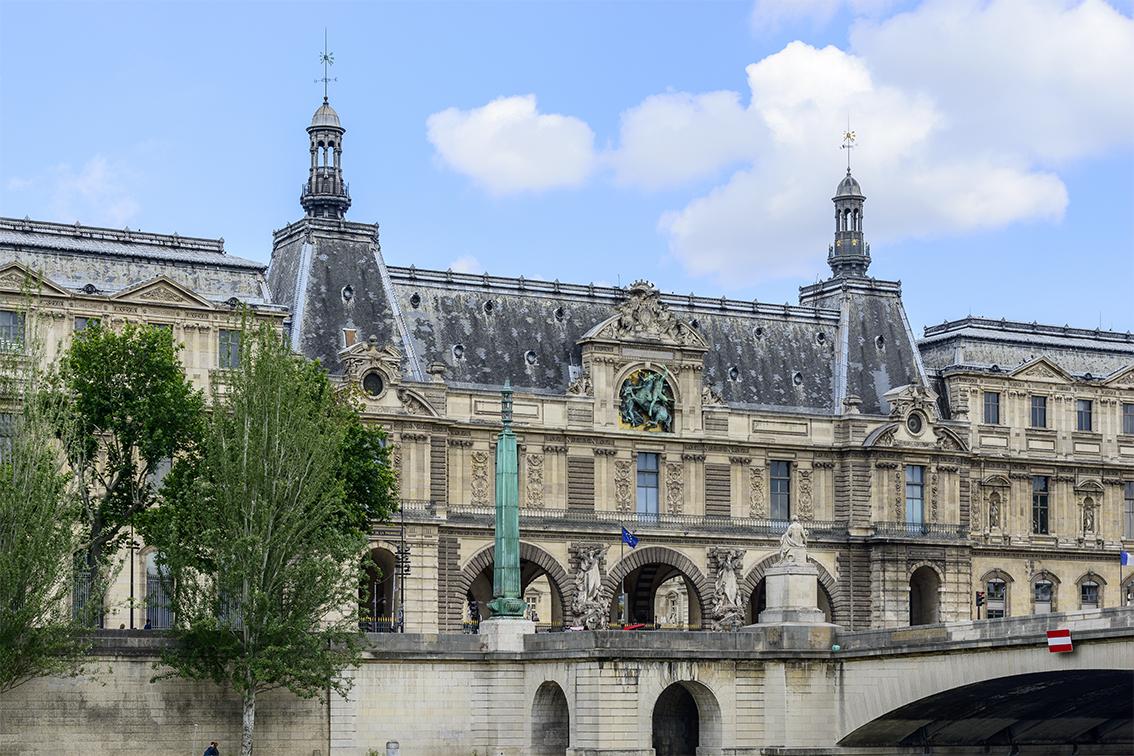
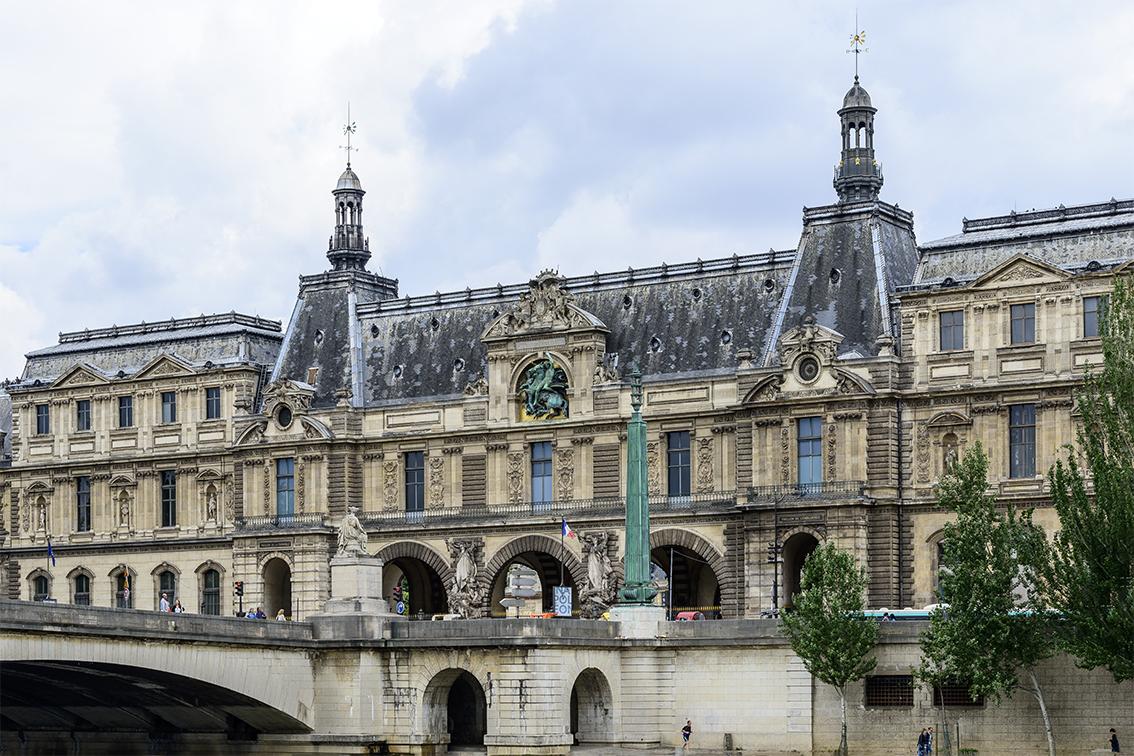
Sculpture on the roof.

Go to the stern and look back at Carrousel Bridge (near) and Royal Bridge (far).
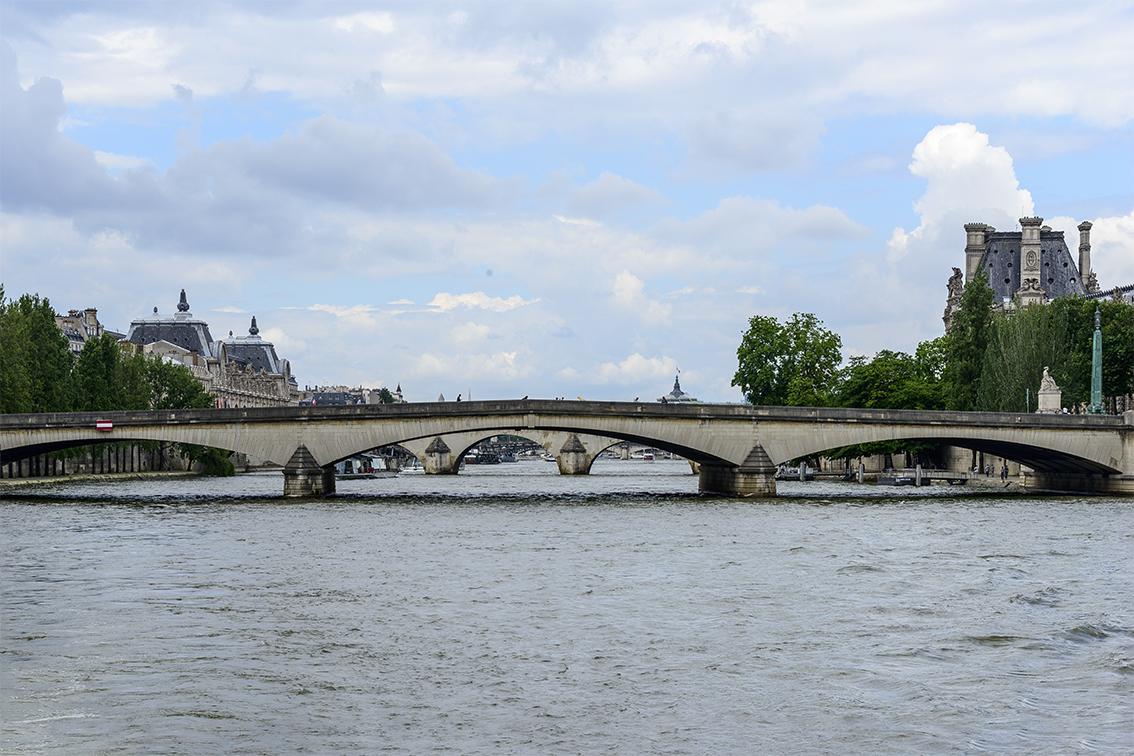
On the left side of the photo is the Musée d'Orsay and on the right is the Louvre.
The Pont des Arts and the Isle of the West appear ahead.
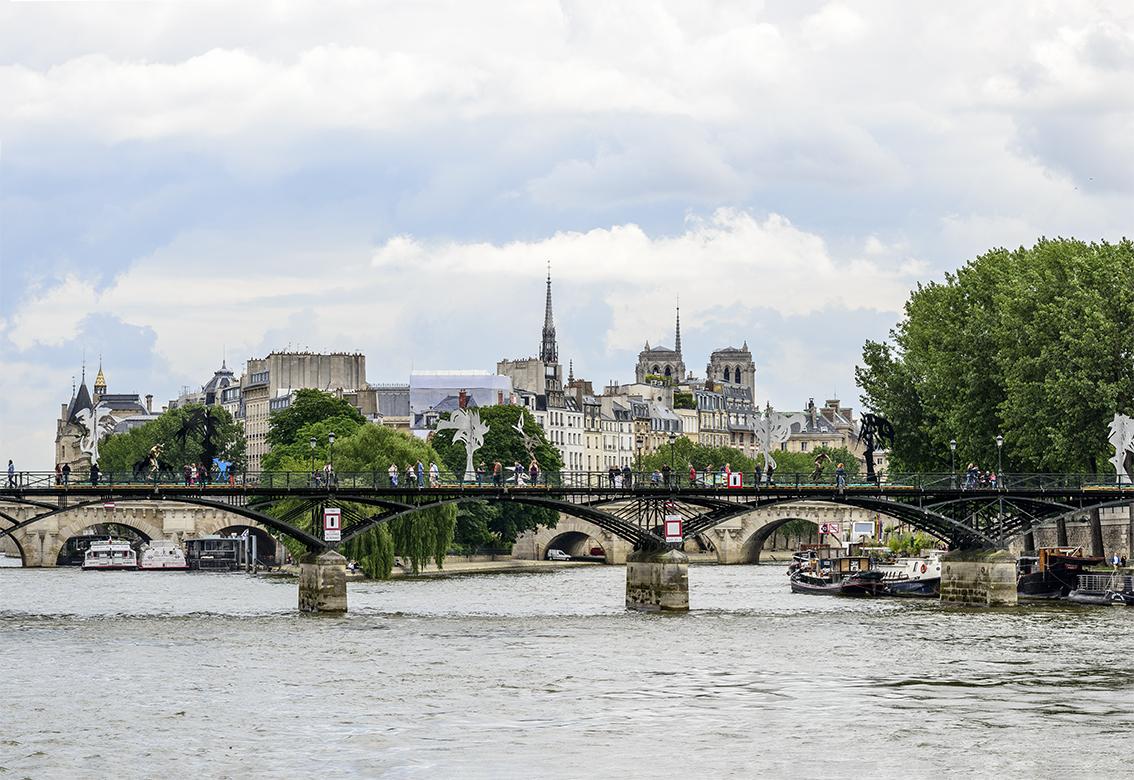
The Bridge of Arts, built in 1804, is a pedestrian bridge. In order to connect the French Academy with the Louvre, Napoleon I ordered the construction of the Bridge of Arts in 1804. The existing bridge was built in 1981-1984, retaining the appearance of the old bridge, but reducing the number of arches from 9 to 7. On June 27, 1984, Paris Mayor Chirac inaugurated the converted bridge. The bridge sometimes hosts art exhibitions and is an open-air studio for painters and photographers.
This is an art bridge shot with a telephoto lens.


Beautiful! Also very romantic!
The art bridge is also full of love locks, weighing a total of 93 tons, equivalent to 20 elephants. The Paris city government, which has been troubled by the "love locks" on the art bridge, seems to care more about protecting monuments than pleasing couples. It was planned to be demolished, but in the end nothing could be done. The official website of the city of Paris urges tourists to switch to "electronic love locks".
The love lock craze did not originate from a Parisian tradition, but from the plot of a 2006 novel "Sorry, I Love You" by Federico Mocha. In the novel, the protagonist hangs the lock with the name on the Miovio bridge in Rome and throws the key into the Tiber River to represent eternal love. The trend first arose in Rome, and then swept across Europe and the world. The Italian government, the birthplace, debated whether to remove the "love lock". One school of opinion believes that the love lock affects the stability of the bridge and should be melted and removed; the other school of opinion believes that this is a symbol of romantic love and a promotional business card for the city.
Instead of going to the Isle of the West, the cruise ship turned around and went back. It doesn't matter, we also have to go to Notre Dame Cathedral in the afternoon, which is on the Isle of the West. The route of the Paris speedboat just matched my plan seamlessly.
Map from Concorde Bridge to Seawall.
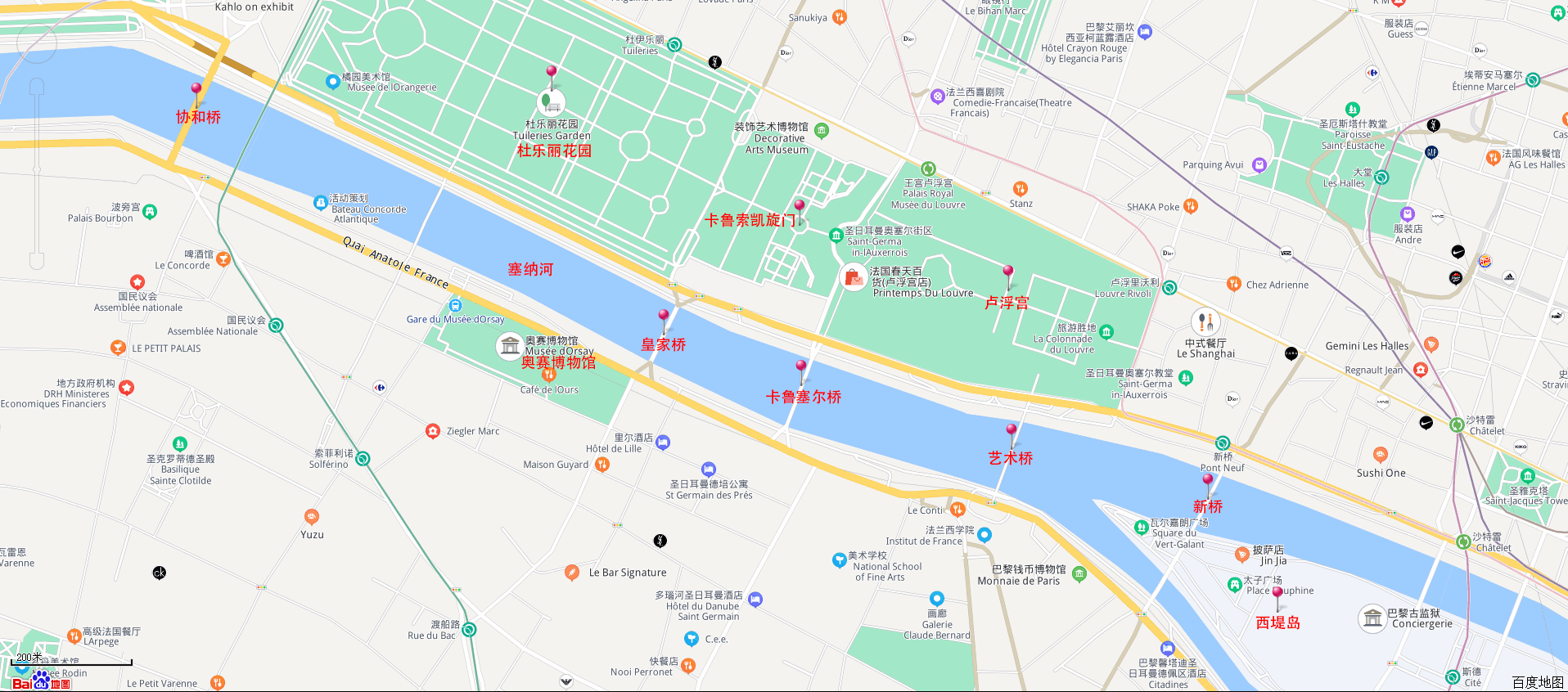
On the return trip, I sat and rested most of the time. The weather was fine, the wind was soft and soft, and it was very comfortable to blow on my face. It was very comfortable to watch the scenery on both sides of the strait slowly move behind me.
Take a few pictures occasionally, this is the billboard of the Musée d'Orsay.

On the left is an advertisement for a painting exhibition by customs officer Le Douanier Rousseau.
Henri Julien Félix Rousseau (May 21, 1844 - September 2, 1910) was an accomplished French painter and a late French Impressionist painter. In his youth he worked as a member of the marching band before leaving Paris to work as a customs officer. He exhibited his debut at the Salon de Champagne in 1885, and "Carnival Night" in the Independence exhibition in 1886. Since then, he has exhibited an average of more than 5 works every year. His representative works include "A Walk in the Village", "Tax Card", "War", "The Gypsy Girl Sleeping", "Myself · Portrait · Landscape", "Country Wedding", "The Girl with the Puppet", "Dream" and so on. He uses those innocent and flawless eyes to observe the world and feel the true meaning of life, which gives his paintings a strong and distinct personality.
On the right is an advertisement for the CHARLES GLEYRE exhibition.
Charles Greer was a Swiss academic oil painter and a teacher of many Impressionist painters such as Monet.
Paris is the art capital of the world!
Cruise back to Jena Bridge.
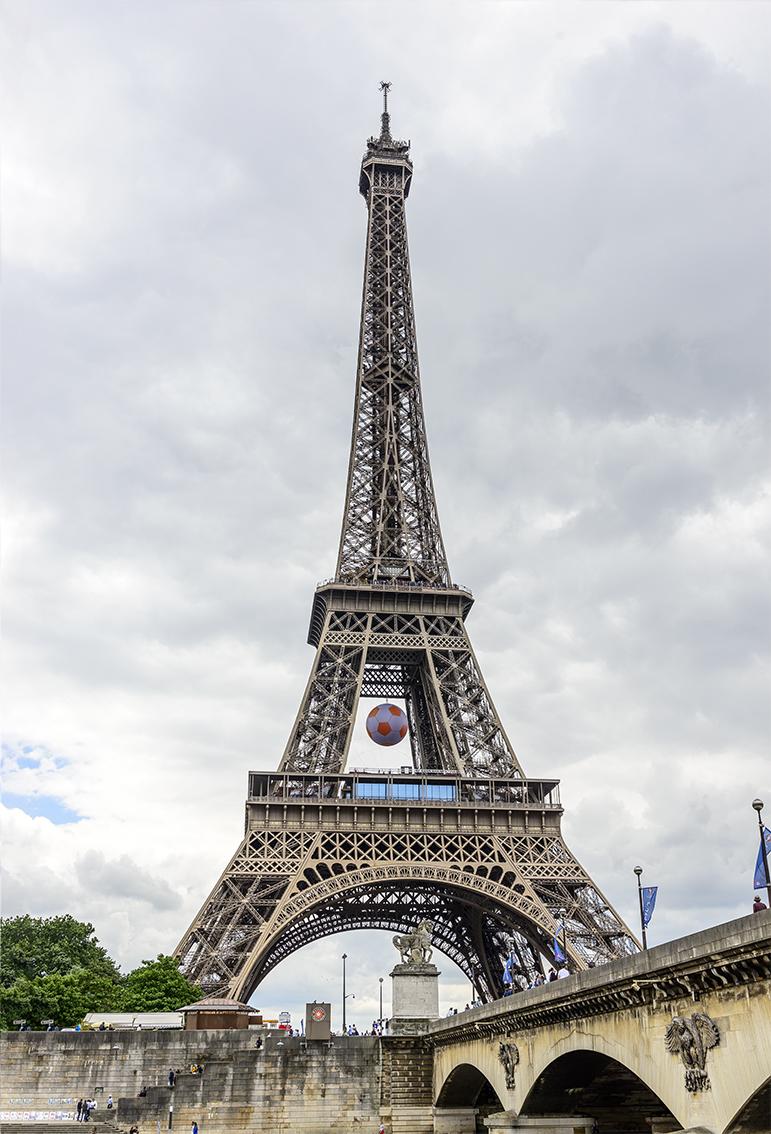
After crossing the Jena Bridge, the cruise ship did not dock at the pier, but continued on. Kind of weird!
Looking back at the Eiffel Tower, the pont de Bir-Hakeim is on the left of the photo.
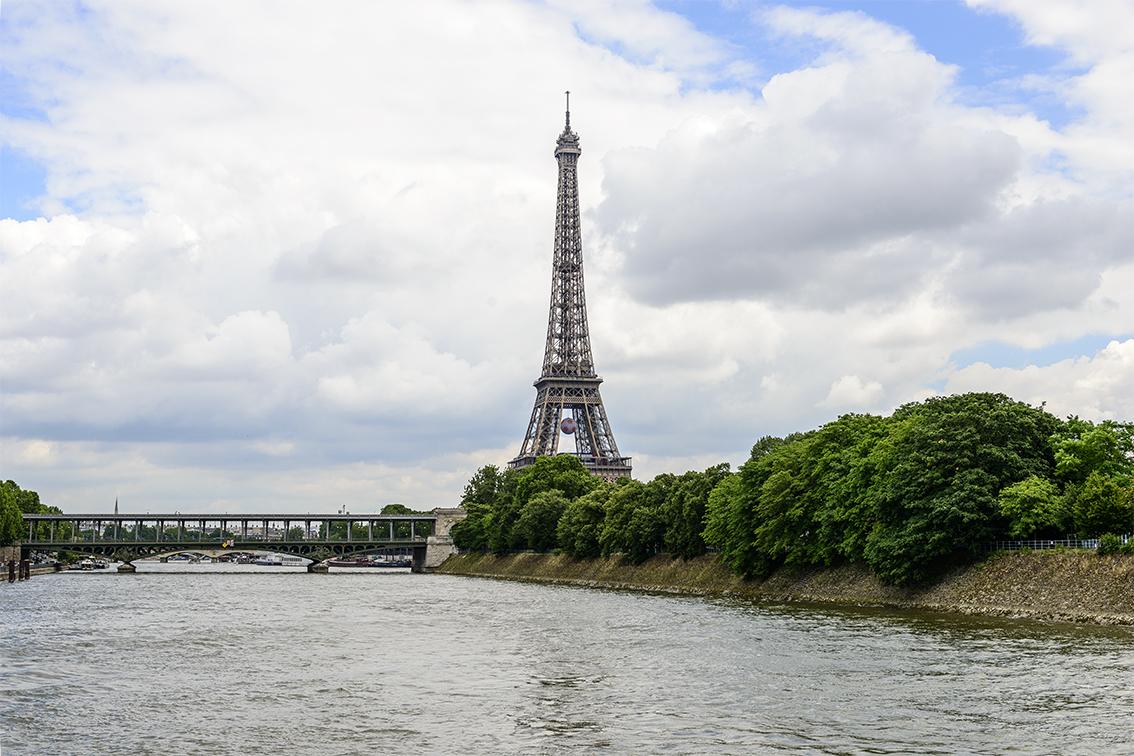
The Bill-Hakim Bridge was built in the early 20th century and designed by the famous French architect Jean-Camille Formigé. The bridge is made of steel and has a two-story structure. The lower structure is where cars, bicycles and pedestrians are, while the upper structure retains the tracks of the Metro Line 6. Since July 1986, the Bill-Hakim Bridge has been listed as a French Historic Monument. The bridge was originally called Pont de Passy and was renamed in 1949. Its purpose is to commemorate a very important battle in the Libyan desert in June 1942 called the Battle of Bir-Hakeim.
A modern building appears on the left side of the cruise ship.
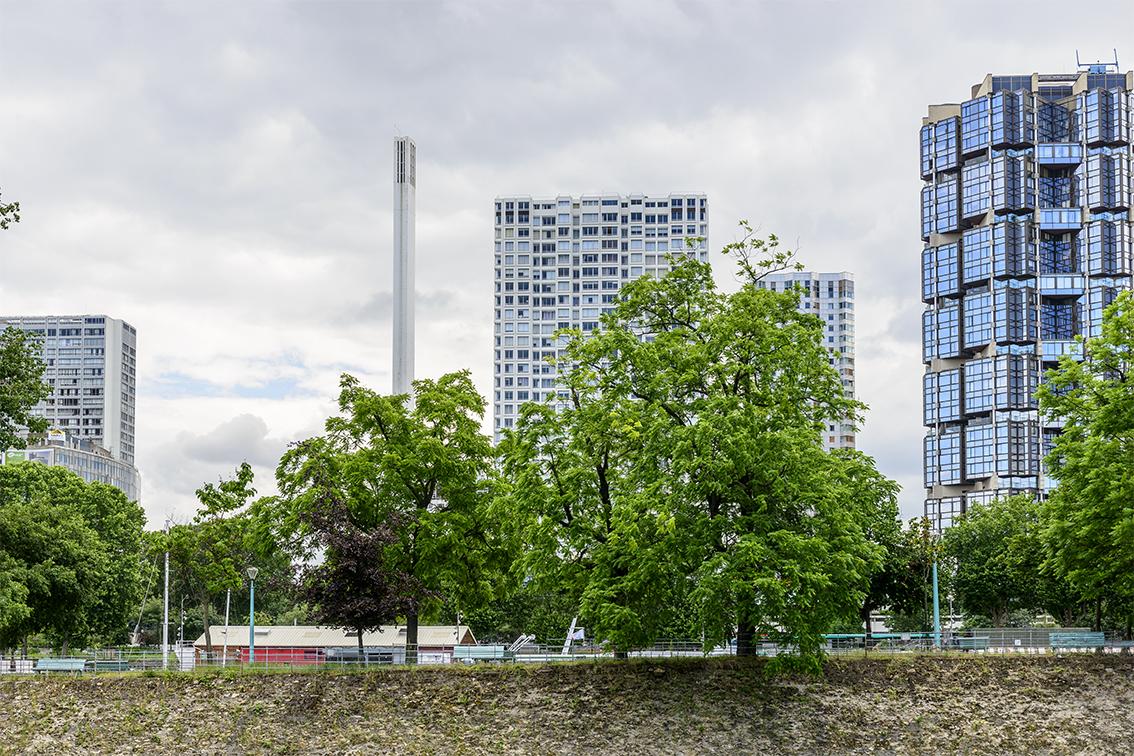

To be honest, after walking around the city of Paris for two days, all I saw were old historical buildings. It was a little surprising to suddenly see these modern buildings.
Where to go? It turns out to take us to see the Muse of Liberty in Paris. The Statue de La Liberté in Paris is at the westernmost point of the Allée des Cygnes on the Seine.
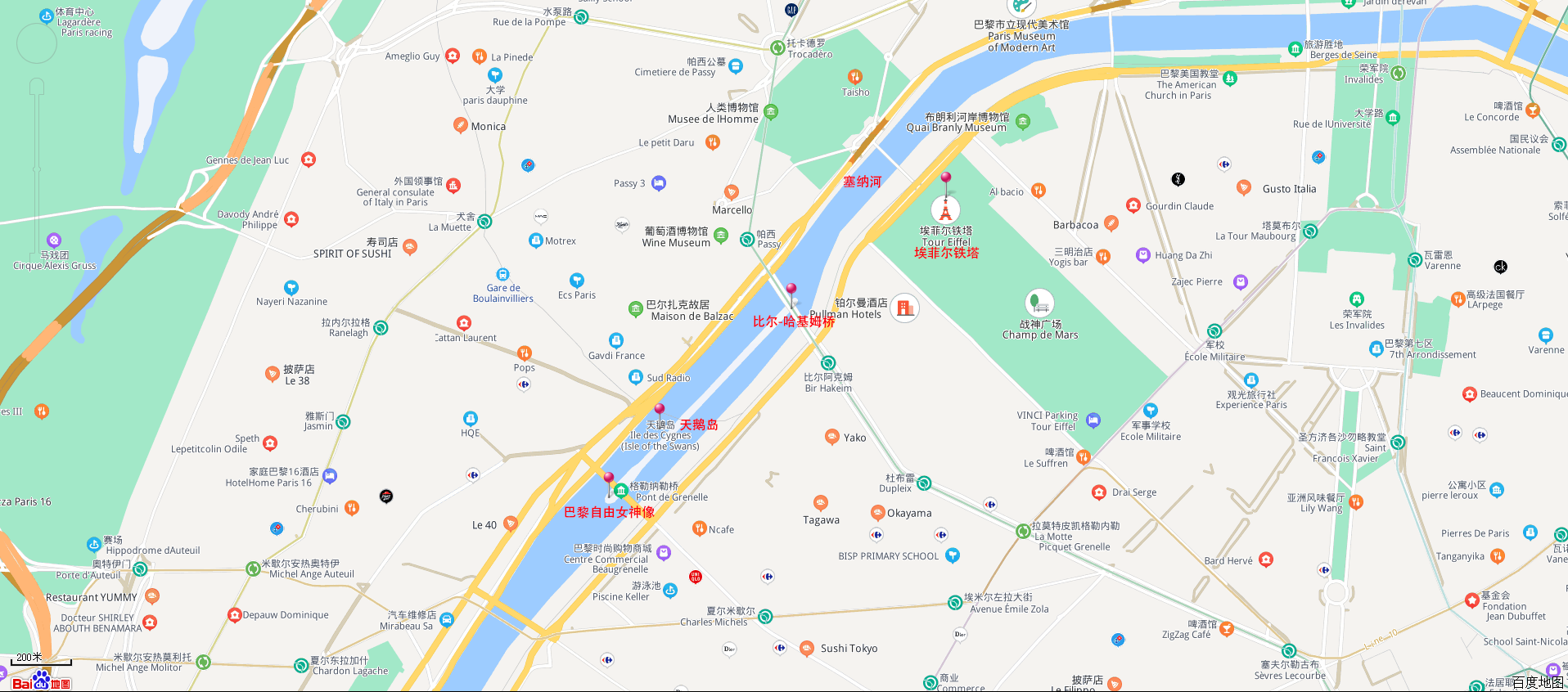
Interesting! Who moved the Liberty Muse in New York to Paris and put it with the Eiffel Tower.
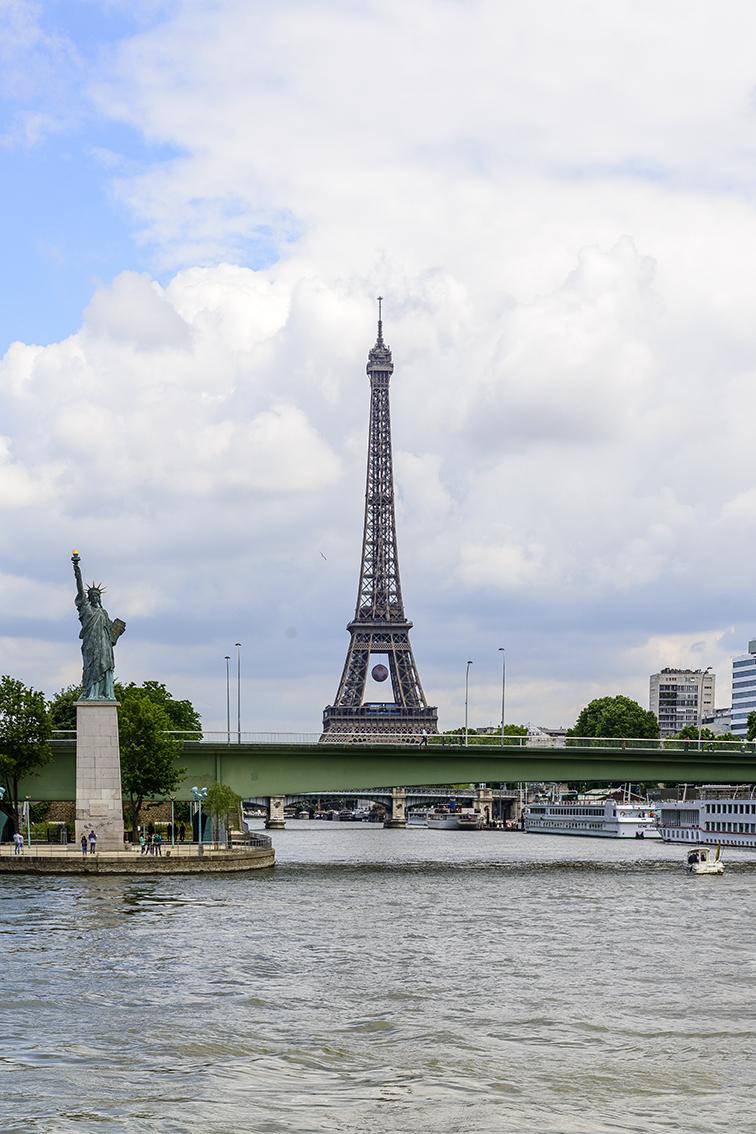
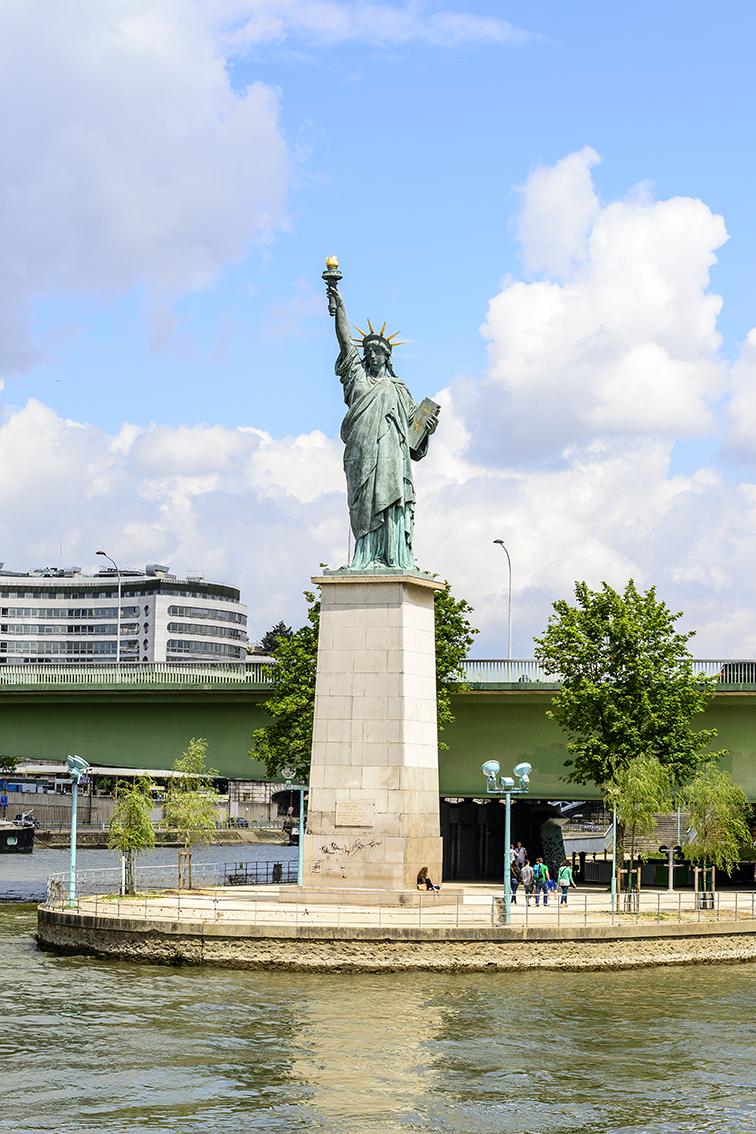
A little closer.

I've been to New York, and this is the Statue of Liberty in New York, the full name is "Bronze Muse National Monument," the official name is "Liberty Enlightening the World," and it's located in New York Harbor, near the mouth of the Hudson River on Liberty Island.
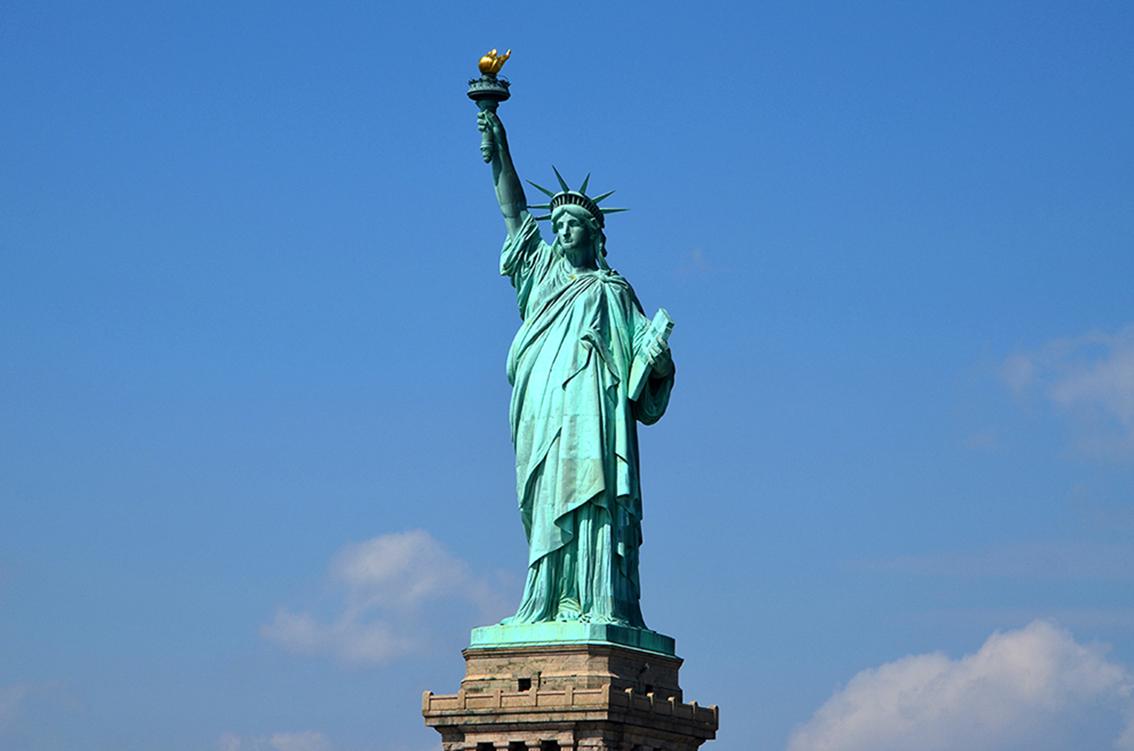
The Liberty Muse is a gift from France to the United States in 1876 to commemorate the U.S.-French alliance during the American Revolutionary War. The bronze statue was inaugurated on October 28, 1886.
It seems that the two Liberty Muses are similar. The Liberty Muse holds a torch of freedom in his right hand and a book in his left. But the statue in New York is engraved with the Declaration of Independence of July 4, 1776, and the statue in Paris is engraved with "July 4, 1776 = July 14, 1789". What does "July 4, 1776 = July 14, 1789" mean? July 4, 1776 was American Independence Day; July 14, 1789 was France's National Day. On this day, the people of Paris captured the Bastille, which symbolized feudal rule, and overthrew the monarchy.
On October 28, 1886, the bronze statue of the Muse of Liberty in New York was inaugurated. Three years later, in 1889, to commemorate the 100th anniversary of the French Revolution, the French in the United States made a miniature version of the Muse of Liberty and gave it to Paris as a gift.
The cruise ship turned around again. At this time, the sun is shining, and the Eiffel Tower under the blue sky and white clouds is very beautiful.
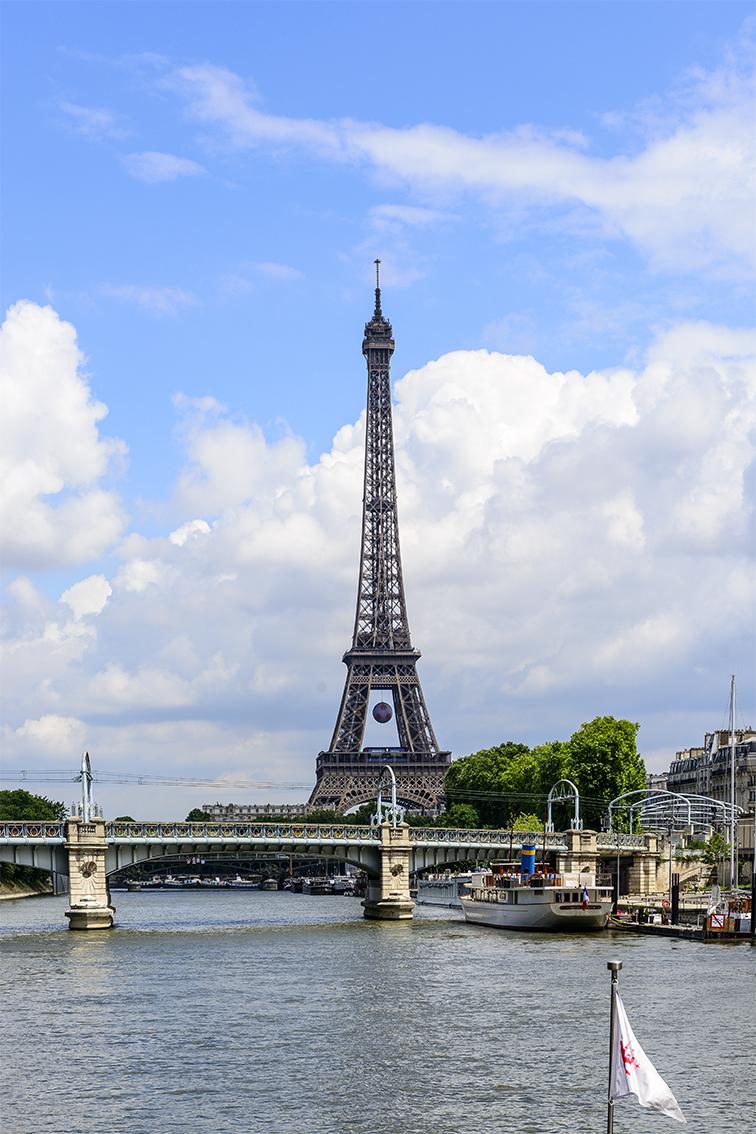
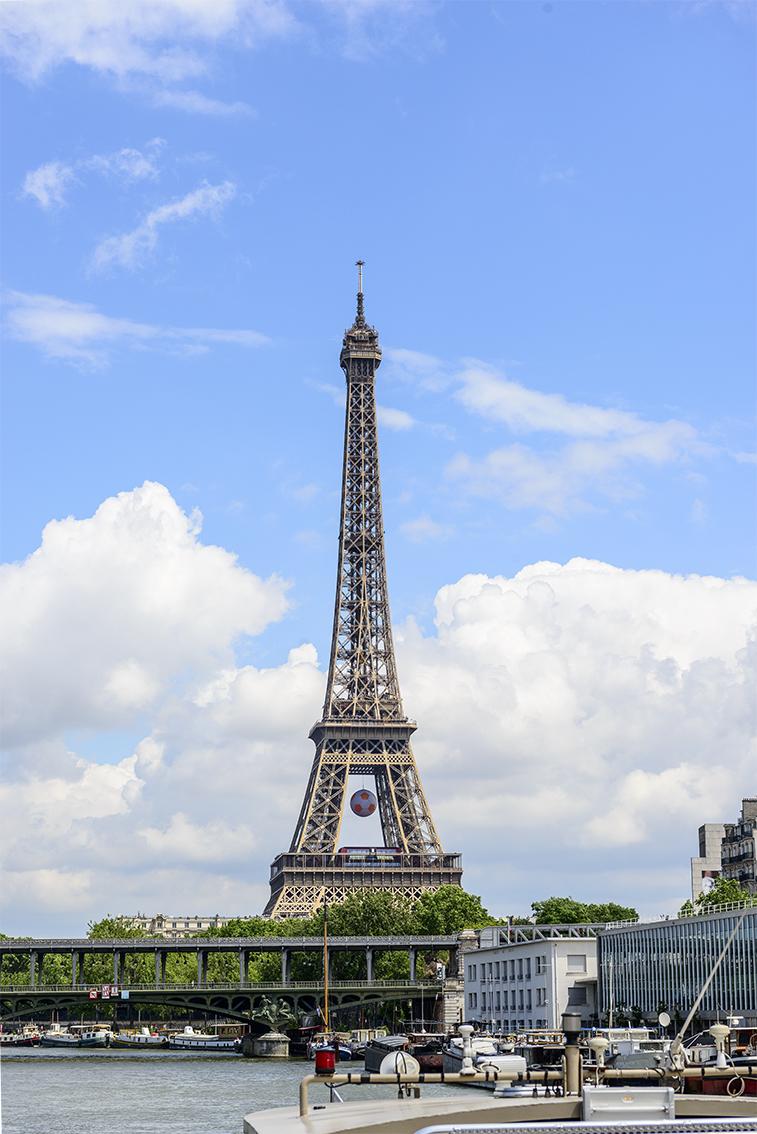
So the trip to the Seine on the "Paris Speedboat" is over. I marked it on Google Maps with a green highlighter. For my friends' reference.

The Seine gave birth to Paris. If Paris is a famous cultural city, then the Seine River passing through the city is her soul. The Seine River is like an old man who has experienced vicissitudes of life, witnessing the changes in the history of Paris, witnessing the rise and fall, poverty and wealth, happiness and sadness of Paris. Although it is silent, it flows quietly and continuously. Anyone who has been to Paris will be deeply shocked by the historical monuments and cultural atmosphere of Paris.
